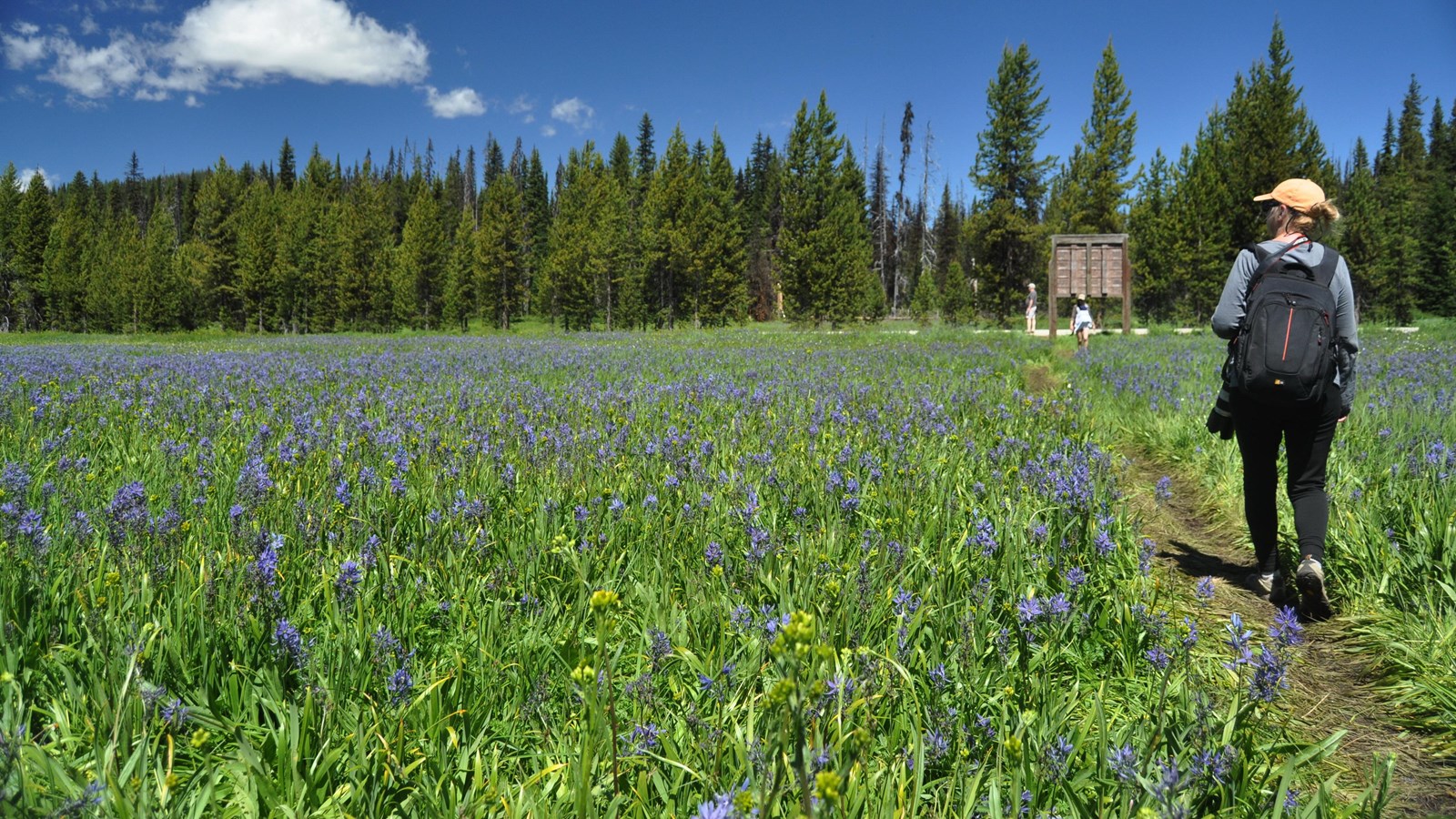Last updated: November 28, 2023
Place
Packer Meadow, Idaho

USFS
Food/Drink - Coffee, Gifts/Souvenirs/Books, Information - Maps Available, Information - Ranger/Staff Member Present, Parking - Auto, Parking - Bus/RV, Picnic Table, Restroom, Restroom - Accessible, Scenic View/Photo Spot, Trailhead, Trash/Litter Receptacles, Wheelchair Accessible
While following Pikee Queenah (Swooping Eagle), their Shoshone guide, on the Lolo Trail in September 1805, Meriwether Lewis, William Clark, and their party came to a broad meadow. John Ordway described it as “an open marshy Swamp which is level and full of Springs.”
They passed the same meadows the following summer, in June 1806. Lewis then wrote,
at noon we arrived at the quawmas [camas] flatts on the Creek of the same name and halted to graize our horses and dine having traveled 12 miles. we passed our encampment of the [NB: 13th] of September at 10 ms. where we halted there is a pretty little plain of about 50 acres plentifully stocked with quawmash and from apperances this fromes one of the principal stages or encampments of the indians who pass the mountains on this road.296
From the expedition members’ perspective, the marshy swamp had turned into a meadow of camas. But nothing had actually changed in the meadow itself. What had changed was Lewis and Clark’s knowledge about it. During the year between their visit to the site, Nez Perce people had shared with these visitors their knowledge of this meadow and of the camas that grows in it.
Camas is a plant with an edible root that grows in marshy areas in this mountainous region. For generations, Nez Perce people tended these camas fields to encourage the growth of the nutritious plants.
It was harvest season when Lewis and Clark passed through in September 1805, and camas was one of the first things that Nez Perce people generously shared with them.
When Lewis and Clark’s party returned the following June, they arrived just before the camas bloomed. Nez Perce people told them to wait to cross the Rocky Mountains until the snow had melted, but the visitors tried to continue eastward. They turned around in just a few days. For their next attempt, they waited until Nez Perce people said the time was right and paid a Nez Perce man to accompany them.
For generations, Nez Perce people had traveled the Lolo Trail and stopped at this meadow to harvest camas. They knew the best time of year to travel, and they knew—and cared for—the plants that were edible along the way. They shared their knowledge and foodways with the members of the Lewis and Clark Expedition—and in so doing, they helped them stay alive.
Camas continues to be an important plant for Nez Perce people and for many other Indigenous communities in this region.
About this article: This article is part of a series called “Pivotal Places: Stories from the Lewis and Clark National Historic Trail.”
Lewis and Clark NHT Visitor Centers and Museums
This map shows a range of features associated with the Lewis and Clark National Historic Trail, which commemorates the 1803-1806 Lewis and Clark Expedition. The trail spans a large portion of the North American continent, from the Ohio River in Pittsburgh, Pennsylvania, to the mouth of the Columbia River in Oregon and Washington. The trail is comprised of the historic route of the Lewis and Clark Expedition, an auto tour route, high potential historic sites (shown in black), visitor centers (shown in orange), and pivotal places (shown in green). These features can be selected on the map to reveal additional information. Also shown is a base map displaying state boundaries, cities, rivers, and highways. The map conveys how a significant area of the North American continent was traversed by the Lewis and Clark Expedition and indicates the many places where visitors can learn about their journey and experience the landscape through which they traveled.
